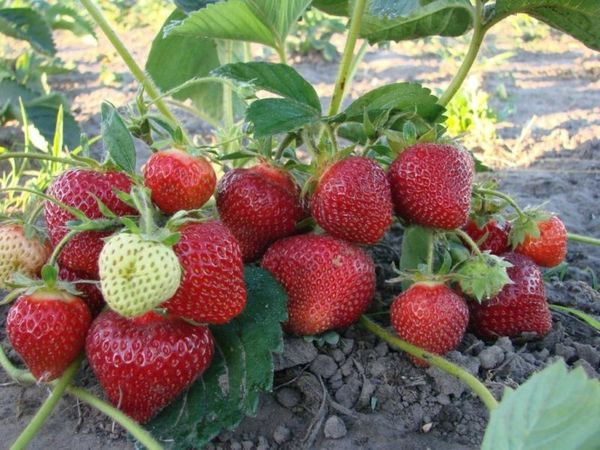Spring care lays the foundation for the future harvest. Regardless of the landing time, a strawberry needs special attention in the spring after winter awakening. On mandatory activities and the intricacies of processing, as well as the advice of experienced gardeners will be discussed in this article.
Table of contents
Do I need strawberry care when planting in the open field?
Many believe that strawberries are unpretentious enough and bear fruit in any conditions. This opinion is based on the fact that in the wild nature strawberries survive without care and bait. However, home beds are not the natural habitat of the culture, and many varieties are hybrids, requiring certain growing conditions.
The most important are the following events:
- irrigation (for the vegetative process);
- loosening (enrichment of soil with oxygen, preventing soil compaction);
- bait (in order to increase the yield and quality of the berries);
- mulching (to protect the plant from drying out and frost);
- transfer (to extend the period of abundant fruiting).
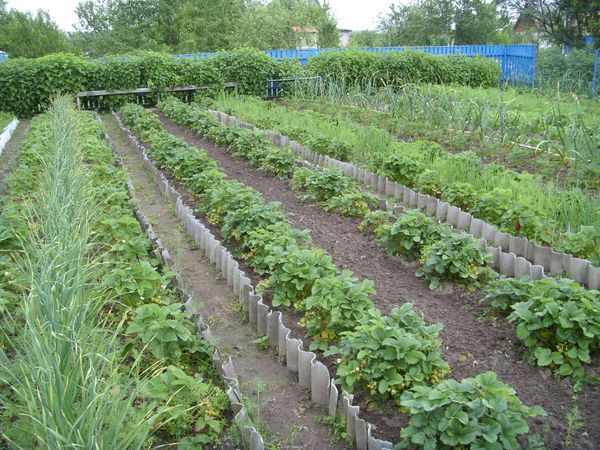
Before planting is to familiarize yourself with the features of the selected varieties. Each crop needs certain conditions, so it is better to plant different types of strawberries on separate beds.This will ease care.
Strawberry processing after winter
Work on the beds need to start, as soon as the snow melted and the ground dried up, no later than early May. For plants, this is not only an important, but also a vulnerable period, which is characterized by unstable weather, temperature fluctuations, and frosts on the ground. Support is needed to create favorable conditions during the formation of flowering buds that ripen into berries.
Preparation of garden beds for the new season includes the following steps:
- cleaning dry leaves, mulch, lined in the fall to protect plants from frost;
- inspection of each bush in order to trim dry leaves, frozen shoots, excess tendrils;
- weed removal;
- loosening the soil;
- soil enrichment nutrients.
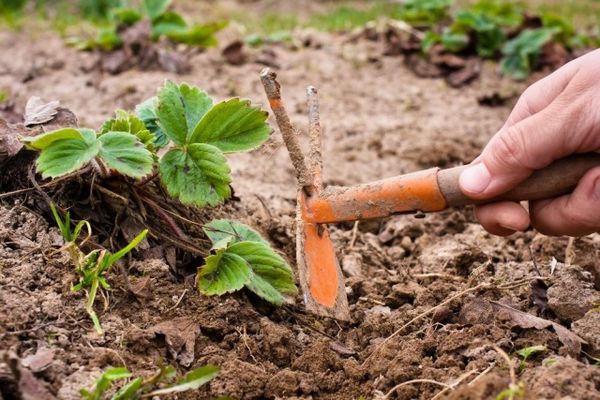
Leaving autumn mulch next season is not worth it, because on garden soils that are rich in organic matter, a complex of pathogens and pests often develops.
Clean beds should be inspected for finding growth points. After a long winter and snow melting, some plants expose the root system. When open tubers are found, they should be gently sprinkled using a light mixture of soil, sand and peat and proper care should be taken.
Seating old bushes and how to reanimate the crop if it managed to freeze
After the inspection of the beds, it is necessary to determine which plants can move away from a slight freezing and which should be removed. If the bush has managed to freeze or freeze, it is noticeably weakened or has most of the burgundy twigs, its better to remove. There will be little sense anyway.
Springtime is characterized by the activation of vegetative growth, so planting a new sapling in the garden to reanimate the harvest will not be difficult. Moreover, the survival rate with such a landing in the country in the summer is quite high.
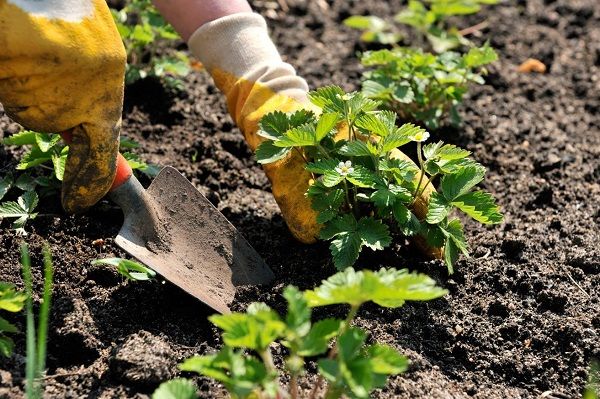
Stages of work:
- to dig up an old bush which managed to freeze to the root and remove tuber from soil;
- select a few old plants (not older than 3 years) to obtain seedlings;
- cut the root into several parts so that each fragment has 3-4 leaves;
- process roots a solution of potassium permanganate (slightly pink);
- prepare the hole, enter into it the humus mixed with peat or other nitrogen fertilizer;
- install seedlings in the pits and fill it with earth, aligning the heart with the ground surface (with the deepening there is a high risk of rotting).
Weeding berries in spring
Strawberries do not like being disturbed too much, so care should be taken when weeding and weeding, large weeds are better. pluck or cut near the ground surface pruning shears. This will limit the invasion of the root system of the culture.
Berry is especially sensitive to processing during the flowering period, so all the work on cleaning and processing the plant should be completed before this stage, making them, peeling strawberries should be step by step according to the instructions. In the opposite case, the inflorescences may fade on the damaged bush.
When weeding is recommended cut off the first mustacheso that they do not pull on nutrients during flowering. In addition, the second release is characterized by a more powerful structure, which contributes to the rapid rooting of new shoots.
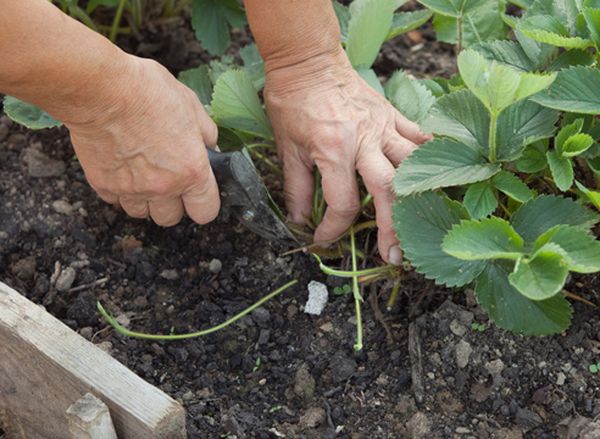
Spring dressing and how to process for a good harvest
For feeding strawberries used different types of fertilizers: organic, mineral, complex. Organic is considered the most accessible, to acquire your own compost pit or container will not be easy. In the manufacture of nutrient solution should stick to recommended proportions, especially with bird droppings. Overdose can burn out plants.
To stimulate the growth of seedlings need to be treated with nitrogen-containing fertilizers. Phosphate is better to enter in the middle of summer, they will help the strawberries to get stronger and prepare for the winter. Food after the winter is necessary for the active development of shoots, the formation of buds, in place of which fruits are formed.
The most commonly used urea, Bordeaux mixture, iodine, they need to water the flowering Victoria. To water or spray a plant it is necessary according to the instruction.
In spring, not only plants awaken, but also insects, microorganisms, which are in the upper layers of the soil. Young saplings, as well as mature bushes, need protection from diseases and pest invasion. This can be achieved by treatment with special preparations.
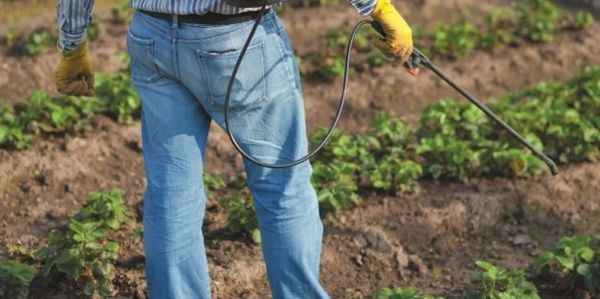
Modern tools do an excellent job of preventing and treating various diseases. not oppressing the development of the culture itself. The greatest danger of strawberries is a fungus, so the best prevention will be the control of soil moisture.
Proper spraying against pests
This principle guides gardeners to grow and protect strawberries. The following tools are popular helpers in proper spraying:
- "Zircon" - improves immunity to almost all diseases, does not contain chemistry;
- "Fitosporin", "Fito plus" - preparations from gray rot;
- "Fitotsid" - eliminates fungal diseases;
- "Actellic", "Aktophit" - help get rid of insects that carry infections and pests.
Special attention deserves the means "Strawberry Saver"with a broad spectrum of action. if they spray a plant:
- fights against pests and mites;
- protects against late blight, macrospariosis, etc .;
- stimulates plant growth;
- toxic in particular for larvae, insect eggs.
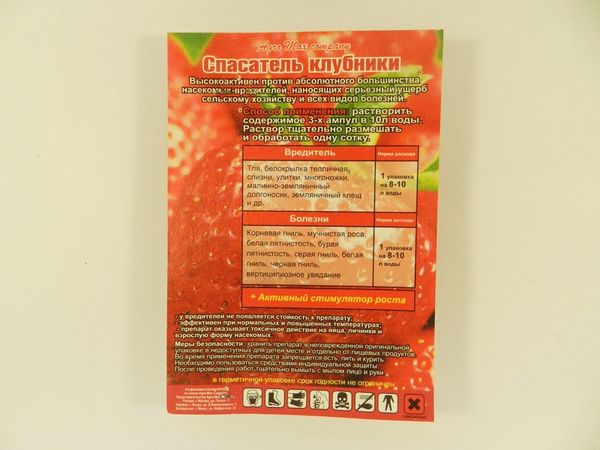
The main advantage of the drug - absolute security for crops in the fight.
Among gardeners there are a lot of folk recipes, which sometimes are not inferior in shop efficiency. One option is to connect copper sulfate and lime. This mixture does well with fungus and pests. Good wins fungal diseases and potassium permanganate.
Important tricks in handling and care
In addition to the general rules of strawberry care, there are various nuances and secrets, which are written by experienced gardeners. Their advice helps to increase yields, saturate the berry with juiciness and unique taste.
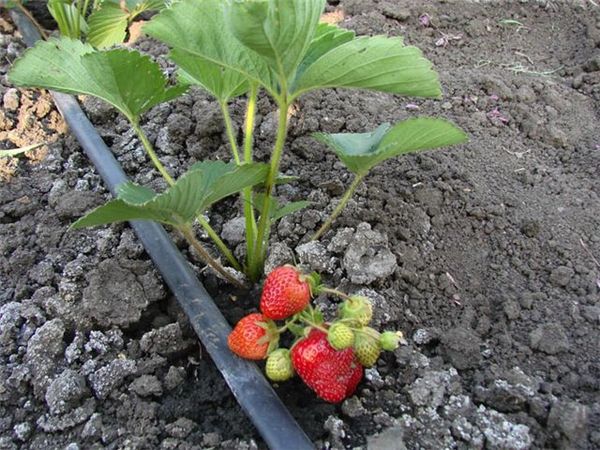
- When choosing a place for planting strawberries, preference is given to the site where they were previously grown: onions, beets, carrots, garlic, celery, greens.
- Shoots develop well in light soils. It is recommended to add peat and sand to dense soil.
- Fertilizing the soil before planting is not worth it, it is better to do it in the fall during spring disembarkation. After the introduction of nutrition in the spring, you need to let the soil settle for at least a month.
- When choosing a watering system, the choice is better to stop. on drip irrigation or sprinkling.
- Young shoots need microelements. A good feed for them is a mixture of potassium permanganate, boric acid, ammonium molybdate and water.
To make spring work easier to carry out without losing important points, it is recommended to draw up an action plan for processing culture. The plant will certainly reward the effort and time spent generous harvest.
